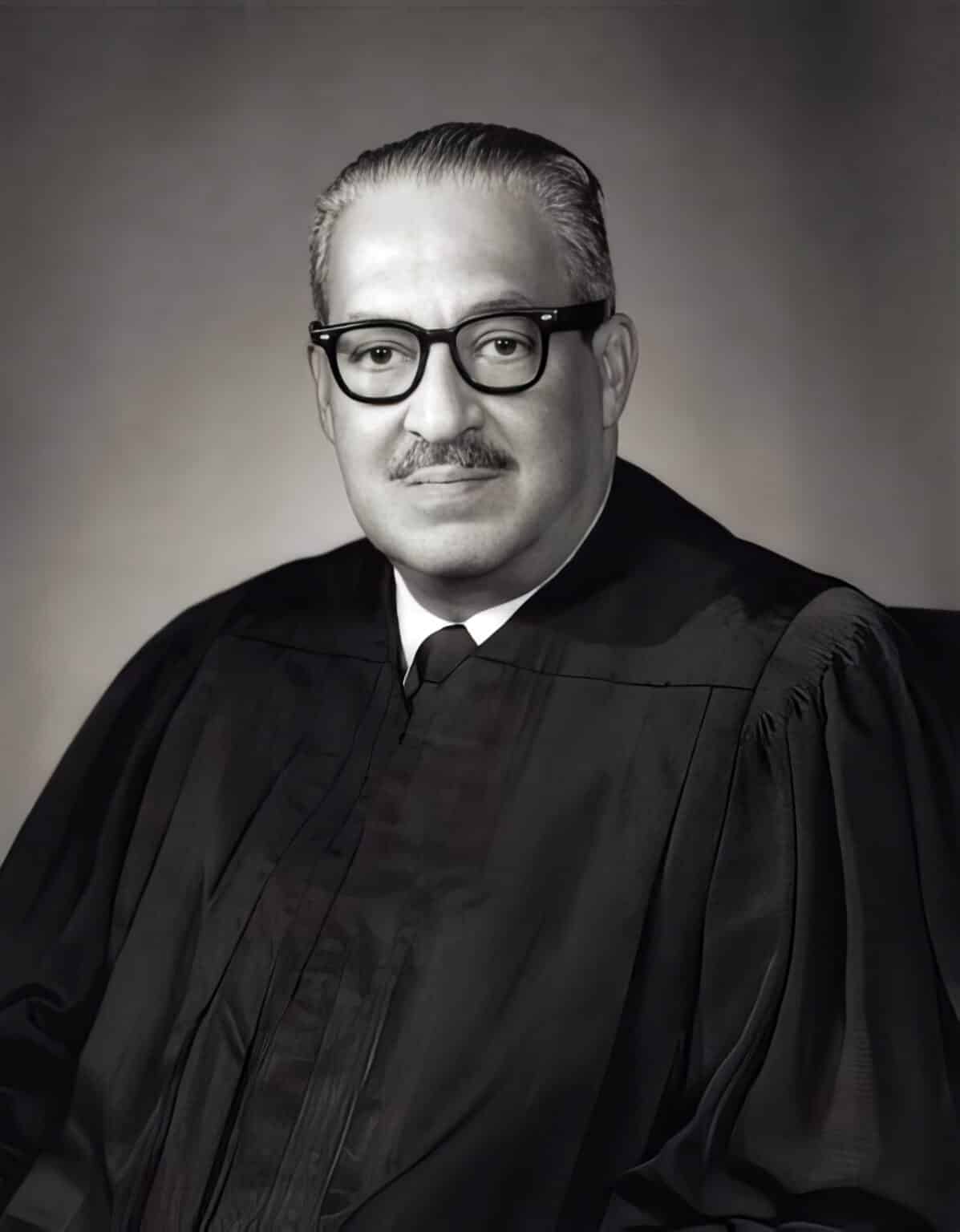RESOURCES
PEOPLE
Justice Thurgood Marshall
1908-1933
Thurgood Marshall was a key figure in American legal history, most notably as the first African American Associate Justice of the United States Supreme Court, serving from 1967 to 1991. Before his appointment to the Court, Marshall made his greatest mark as a civil rights lawyer, architect of the legal strategy that challenged racial segregation, and the lead attorney in Brown v. Board of Education (1954), the landmark case that dismantled legal school segregation.
Born in Baltimore, Maryland, Marshall was educated at Lincoln University and Howard University School of Law, where he graduated first in his class in 1933. At Howard, he studied under Charles Hamilton Houston, a brilliant legal mind and vice dean of the law school. Houston mentored Marshall and instilled in him the belief that the law could be used as a powerful tool to fight racial injustice. Houston developed the legal strategy that would challenge segregation by attacking the “separate but equal” doctrine established in Plessy v. Ferguson (1896), beginning with graduate and professional schools where disparities were most evident.
Marshall, Houston’s star pupil, joined the NAACP Legal Defense and Educational Fund and later succeeded Houston as its director. Marshall implemented Houston’s strategy in courtrooms across the South, successfully arguing a series of cases that laid the groundwork for Brown. These included Sweatt v. Painter (1950) and McLaurin v. Oklahoma State Regents (1950), both of which undermined the constitutionality of separate educational facilities for Black students.
Two of Marshall’s key collaborators in this effort were Oliver Hill and Spottswood Robinson, civil rights attorneys based in Virginia. Hill and Robinson were responsible for many local desegregation lawsuits, including Davis v. County School Board of Prince Edward County—a student-led case in Virginia that became one of the five combined into Brown v. Board of Education. Robinson argued Davis in court, and Hill worked extensively on the legal strategy and local organizing. Their work, coordinated with the NAACP Legal Defense Fund, was crucial in building the evidentiary record showing the harm of segregated schooling.
In Brown v. Board of Education (1954), Marshall led the team of NAACP lawyers who argued before the Supreme Court that segregation in public education violated the Equal Protection Clause of the Fourteenth Amendment. His presentation of sociological and legal arguments persuaded the Court to issue a unanimous decision declaring that “separate but equal” has no place in public education, overturning Plessy as it applied to schools.
Marshall’s success in Brown solidified his reputation and laid the path for his nomination to the federal bench by President John F. Kennedy in 1961 and to the Supreme Court by President Lyndon B. Johnson in 1967. On the Court, Marshall continued to advocate for individual rights, civil liberties, and equality under the law until his retirement in 1991.
